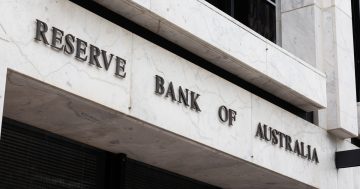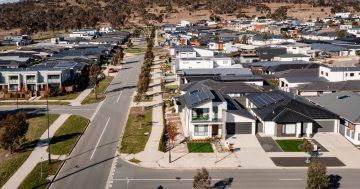James Eyers* says the switch from interest-only mortgages is proving stressful for many Australian borrowers, but the Commonwealth Bank is confident they will soon adjust.
 The number of home loan borrowers late on repayments has spiked as Commonwealth Bank shifts them from interest-only mortgages to loans repaying both principal and interest.
The number of home loan borrowers late on repayments has spiked as Commonwealth Bank shifts them from interest-only mortgages to loans repaying both principal and interest.
But the bank’s CEO, Matt Comyn (pictured) said customers have been able to get payments back on track by paring back their spending elsewhere.
He also welcomed the recent cooling of housing prices in Sydney, saying they are positive for financial stability, and telling analysts this was “unambiguously a good thing” over the longer term.
Announcing a $9.23 billion full-year profit that missed consensus expectations, CBA pointed to a 10 basis point increase in the number of customers more than 90 days late on their home loan repayments — from 0.6 per cent to 0.7 per cent of borrowers.
“The switching effect has an upward increase in the 90-day arrears,” Mr Comyn told The Australian Financial Review.
“It takes a bit of time … to adjust to the new repayments.”
The Reserve Bank, which last week left the official cash rate unchanged at 1.5 per cent, has said mortgage payments can rise by between 30 per cent to 40 per cent for some interest-only borrowers who have to repay principal and interest.
RBA Deputy Governor, Guy Debelle said in May “while some borrowers will clearly struggle with this, our expectation is that most will be able to handle the adjustment.”
Mr Comyn backed up this view, saying he did not expect the arrears levels would deteriorate further and that “over time, the customers adjust to the new payments”.
Analysts asked Mr Comyn about the rising arrears during the results briefing, with Macquarie’s Victor German observing the number is a “historical leading indicator for deteriorating credit quality”.
CBA is the largest mortgage lender in Australia, with 1.5 million home loan accounts with a total balance of $374 billion.
Of these, 64 per cent of borrowers are owner occupiers.
Thirty per cent of CBA mortgage customers are on interest-only loans, down from 39 per cent a year ago, after the prudential regulator implemented caps to cool down red hot housing markets.
Around 27 per cent of CBA’s interest only borrowers are expected to switch to principal and interest loans in FY2019; CBA said the majority are investors “and those with large payment buffers”.
The bank said it is writing to interest only borrowers 12 months before their loans reset to warn them of the changes and said 79 per cent of customers coming to the end of an interest-only period have an opportunity to extend the interest-only terms for a further year.
‘Pockets of stress’
CBA also said the uptick in mortgage arrears reflects “pockets of stress” in the economy, “as some households experienced difficulties with rising essential costs and limited income growth”.
The areas of the country experiencing the most stress are in Western Australia, where the bank saw “continued softness in outer metro and regional” areas rather than mining towns, Mr Comyn said, and the Northern Territory, where its small book was hit by rising unemployment as resource projects were completed.
In order to reduce risk, CBA is writing more loans through its branches rather than brokers.
Over the second half, 63 per cent of loans were made through its proprietary channels, much higher than the average of 45 per cent for the other banks.
Asked about discounting of interest rates to win market share, Mr Comyn said “there has been a pretty intense level of competition in the home lending market”.
But he said CBA was willing to give up a bit of market share to focus on the quality of the book.
It grew its home lending by 3.7 per cent over the year compared to 5.6 per cent for the system.
This loss of share reflects “early measures to manage regulatory requirements and a continued tightening in underwriting and serviceability assessments,” it said.
All loans are assessed with an interest rate buffer of 2.25 per cent above the rate for the customer, with a minimum floor rate of 7.25 per cent and the bank has beefed up verification procedures.
CBA continues to grow mortgages in NSW, where property prices have fallen the most.
But Mr Comyn said he’s not worried about the cooling in house prices.
Corelogic data last month showed house prices have fallen 1.6 per cent over the past year in the largest decline since 2012.
CBA’s slides pointed to prices in Sydney being down 4.5 per cent in the past year, after rising 13.5 per cent over the past three years.
“That slowdown in house prices and a slight reduction overall is a good thing long term from a financial stability perspective,” Mr Comyn said.
He said the heavy lifting by the Australian Prudential Regulation Authority (APRA) to reduce housing market risk had been completed.
“As APRA has pointed out, the tightening that has been done is largely complete and anything beyond that is at the margin.”
CBA is expecting mortgage credit growth to be around 4 per cent in the year ahead.
“That is lower than we have seen — but it’s a good thing,” Mr Comyn said.
* James Eyers writes on banking, fintech and technology for The Australian Financial Review in Sydney.
This article first appeared at www.afr.com/.











